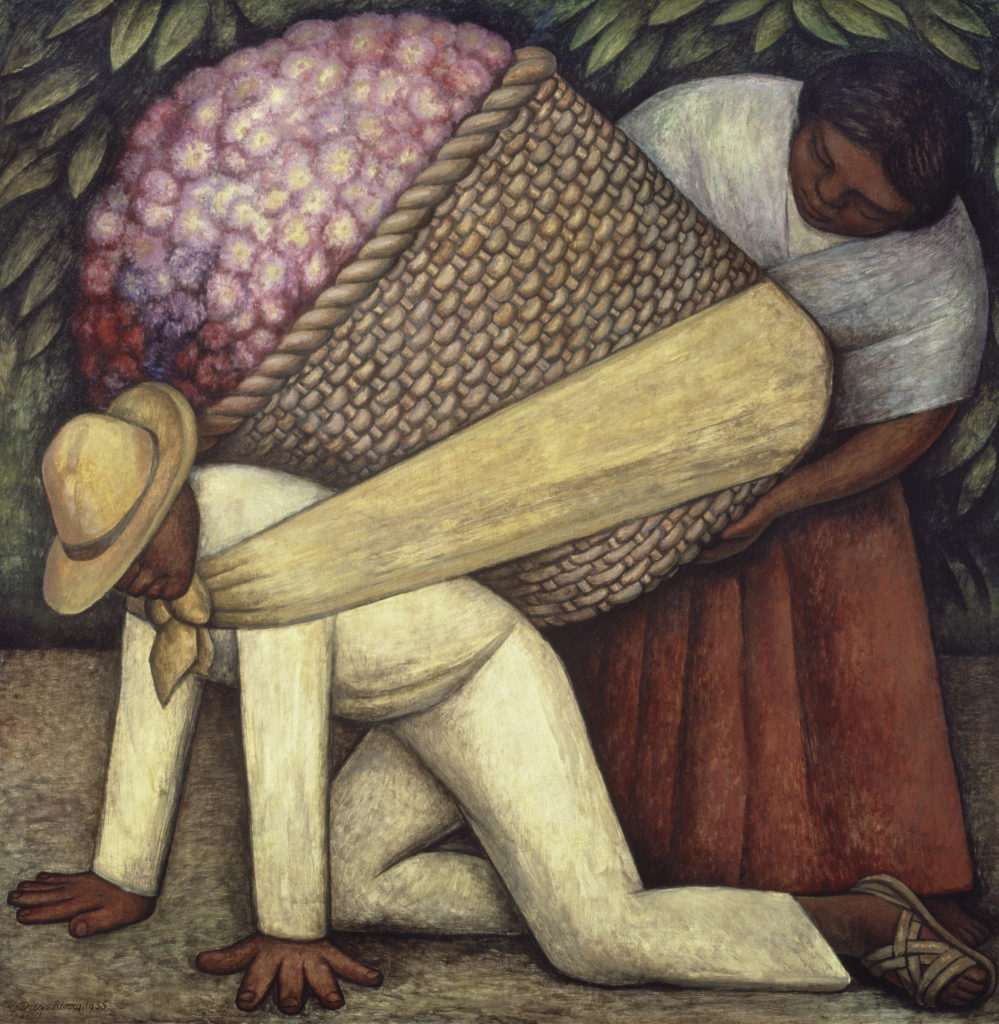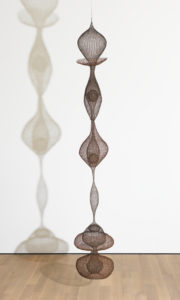
Diego Rivera, The Flower Carrier, 1935; Collection SFMOMA, Albert M. Bender Collection, gift of Albert M. Bender in memory of Caroline Walter; © Banco de Mexico Diego Rivera & Frida Kahlo Museums Trust, Mexico, D.F. / Artists Rights Society (ARS), New York
Key Concepts
- Materials and process
- Narrative/storytelling in art
- Choices artists make
Materials
- 1 cup all-purpose flour
- ½ cup salt
- ½ cup water
- Paint (watercolor, finger paint, or even food coloring)
- A paintbrush
Introduction
- What story do you see in this work? What elements in the painting make you think this?
- Use your senses to describe the scene that is shown in this artwork. What sounds and smells do you imagine?
- How would you describe the mood of this picture—happy, sad, calm, excited? What do you see that makes you say that?
- If these two figures began to speak, what do you think they would say? What do you see that makes you say that?
Instructions
- Mix flour and salt together in a bowl. Slowly mix water, a few tablespoons at a time, into flour mixture until dough is smooth and easy to handle. Knead dough for 10 minutes and let rest for 20 minutes.
- Turn your dough out onto a work surface, like a table or countertop. Sprinkle some extra flour on your dough if it’s sticky. Use a rolling pin (or a bottle) to roll the dough until it’s about ¼-inch thick. Cut the dough into a square, pick it up, then place it on something sturdy, like a piece of cardboard, a cutting board, or a Tupperware lid.
- Now you can start painting! Think of the people you see daily (family, friends, neighbors, etc.) and activities from your daily life. Use watercolors to paint a “fresco” of this everyday moment.
- Once you’re finished, let it air-dry for a week or place it in the oven at 250 degrees for about 4 hours. When it’s completely dry and hard, it will last a long time, just like Diego Rivera’s artwork!
Variation
If you don’t have watercolors, you can use food coloring to paint your image. You can also use markers to draw on the dough tablet—just make sure to draw gently so you don’t poke a hole in the dough.
Relevant Information
Diego Rivera created murals, drawings, and paintings about Mexican history, culture and traditions, and about the daily life of common people. This painting is a good example of the everyday moments and people Rivera was interested in portraying. The subject of Mexico’s many flower markets and vendors is one he returned to many times in his career. In this artwork, two figures work together to lift a gigantic basket full of flowers.
For his murals, Diego Rivera painted on wet plaster so the paint soaked in and became part of the wall when the plaster dried. This mural technique, called a fresco, was developed in Italy and was used often during the Renaissance, which took place between the 14th century and 17th century. Rivera would have seen frescoes while he was in Europe between 1907 and 1921.
Discussion
- What person or everyday moment did you choose for your artwork? Why?
- What is the mood of your painting? How did you convey that mood?
- Did your image change at all as it dried in the dough? If so, how?
